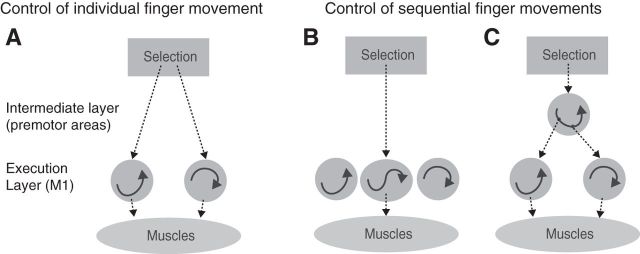Figure 1.
Two ways of representing sequential movements. A, Before training sequences are produced through a sequential selection of single-finger movements. The execution layer (M1 and spinal cord) contains populations of neurons that, once activated, generate the muscle activity patterns necessary for a single-finger movement through their intrinsic population dynamics. The selection layer acts directly on these representations. B, After learning, the repeated sequential activation of two execution primitives leads to the formation of a new population of neurons that produces the two presses as a single unit. C, Alternatively, a newly formed neural population in an intermediate layer could activate the execution primitives for the two fingers in the correct order.

